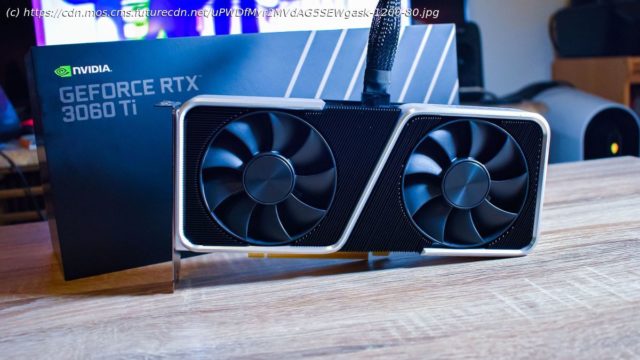The Nvidia GeForce RTX 3060 Ti is Nvidia Ampere’s mid-range champion, targeting 1080p and 1440p gamers. Here’s our review of the Nvidia GeForce RTX 3060 Ti.
While the Nvidia GeForce RTX 3060 Ti doesn’t do anything especially new, it makes the Ampere architecture more accessible (well, if you can find and RTX 3060 Ti that does exist). Even more so than the cheaper RTX 3060, it balances performance and price, which makes it the best graphics card for most people – again, assuming you can find one. There are some games where the Nvidia GeForce RTX 3060 Ti is better than the RTX 2080 Super, a card that just a couple years ago was nearly double the price. So, sure, it’s not the fastest card out there, but that doesn’t matter when it can provide such power for a low-ish price. With this graphics card, you’ll be able to run all the best PC games with Ultra settings and ray tracing at 1440p – and maybe even 4K if you use DLSS. Furthermore, it offers a compelling prospect for users who find the Nvidia GeForce RTX 3080 and the more expensive RTX 3090 to pack more power than they would ever fully utilize and whose price they simply cannot justify for their needs. And, as such, the Nvidia GeForce RTX 3060 Ti is the best graphics card for most consumers. The Nvidia GeForce RTX 3060 Ti is available starting December 2,2020, and you can pick it up starting at $399 (about £299, AU$540). This largely falls in line with what we’d expect a graphics card in this segment to cost, especially considering the Nvidia GeForce RTX 2060 Super started at the same $399 (about £315, AU$580) and the RTX 2060 was $349 (about £260, AU$475). The RTX 3060 Ti falls right around the same price as the RTX 2060 Super, while being as powerful as the RTX 2080 Super, a card that retailed for $699 (about £560, AU$990). That card was a 1440p Ultra machine, and so it follows that the 3060 Ti will be as well, and now it’s way cheaper. The Nvidia GeForce RTX 3060 Ti is based on the same Ampere architecture as the RTX 3080, and gives us a look at what the Ampere lineup will look like in the mid-range and budget segment of the GPU market. This isn’t exactly going to be the graphics card that’ll push Watch Dogs Legion with ray tracing at 4K, but it is definitely up to doing it at 1080p. With this graphics card, you’re getting 8GB of the same GDDR6 memory found in the RTX 3070, paired with 38 Ampere Streaming Multiprocessors (SM). However, because of changes Nvidia has made to its SM since Turing, each of these now has 128 CUDA cores, double that of the 64 in each Turing SM. That means there are now 4,864 CUDA cores in the RTX 3060 Ti, up from the 2,176 found in the RTX 2060 Super. Power consumption sees an increase over the RTX 2060 Super, but it’s not as pronounced as other cards in the Nvidia Ampere lineup. The total graphics power (TGP) is 200W for the RTX 3060 Ti, up from the 175W of the RTX 2060 Super. It’s more, but it shouldn’t be so much more that you’ll need to worry about upgrading your power supply to accommodate – assuming you have a competent one in the first place, that is. Back in Turing, each SM had two datapaths – one dedicated to Floating Point (FP32) workloads, and the other dedicated to Integer. With Ampere, and thus the RTX 3060 Ti, Nvidia was able to engineer the SM to have one of the datapaths essentially able to pull double duty, which is why the amount of CUDA cores has effectively doubled per SM with Ampere. Outside of CUDA cores, each SM also has Tensor Cores for AI workloads like Deep Learning Super Sampling (DLSS), and dedicated ray tracing cores. Each SM has one RT core and four Tensor Cores. The dedicated among you might have noticed that’s half the amount of Tensor Cores in each SM than Turing had, but there’s a good reason for that – they’re more than twice as fast this time around.






